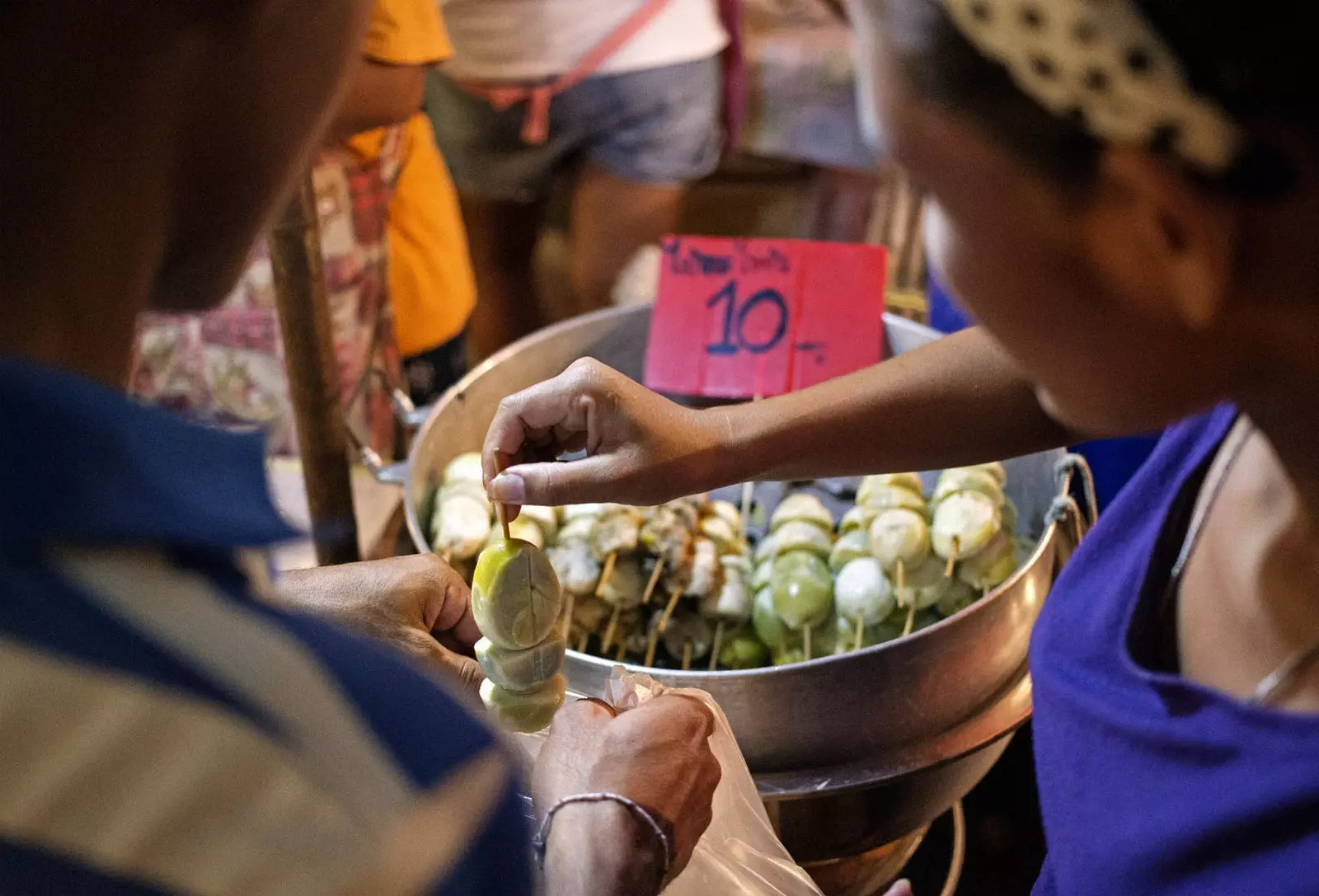
'Balut', possibly the best known food in the Philippines
Adventurers, naturalists and divers travel to Philippines in search of Paradise beaches and dives in which to contemplate its exceptional marine biodiversity. However, its list of attractions does not end there. Little is known of the gastronomy of the country of 7,107 islands, but its culinary richness and the ritual of sitting at the table they are worthy claims to experience and know.
Eating is, in addition to a vital need for human beings, the best time of day for Filipinos. They are food lovers who, as if it were a ceremony, gather the family around a table where food is always at the center. family-style they call it. Between hours, they go to the afternoon snack , a word inherited from the Spanish, and their Instagram profiles are full of photos of their delicacies.
One should approach Filipino food keeping in mind the mix of influences which houses. Its own history and proximity to other countries have shaped a rich cuisine full of contrasts with salty, sweet and spicy flavors. Spanish, Malay, American, Chinese and Arab explorers and settlers have contributed to the elaboration of unique culinary delights in the world . This hodgepodge of nuances, which could be a springboard for access to the international gastronomic scene, does not seem to have enough momentum. Andrew Zimmerman, renowned American culinary expert, predicted a few years ago that Filipino cuisine would become "the next big thing." While this happens, or not, the best thing is to discover it and enjoy it personally. Who tries it, repeats.
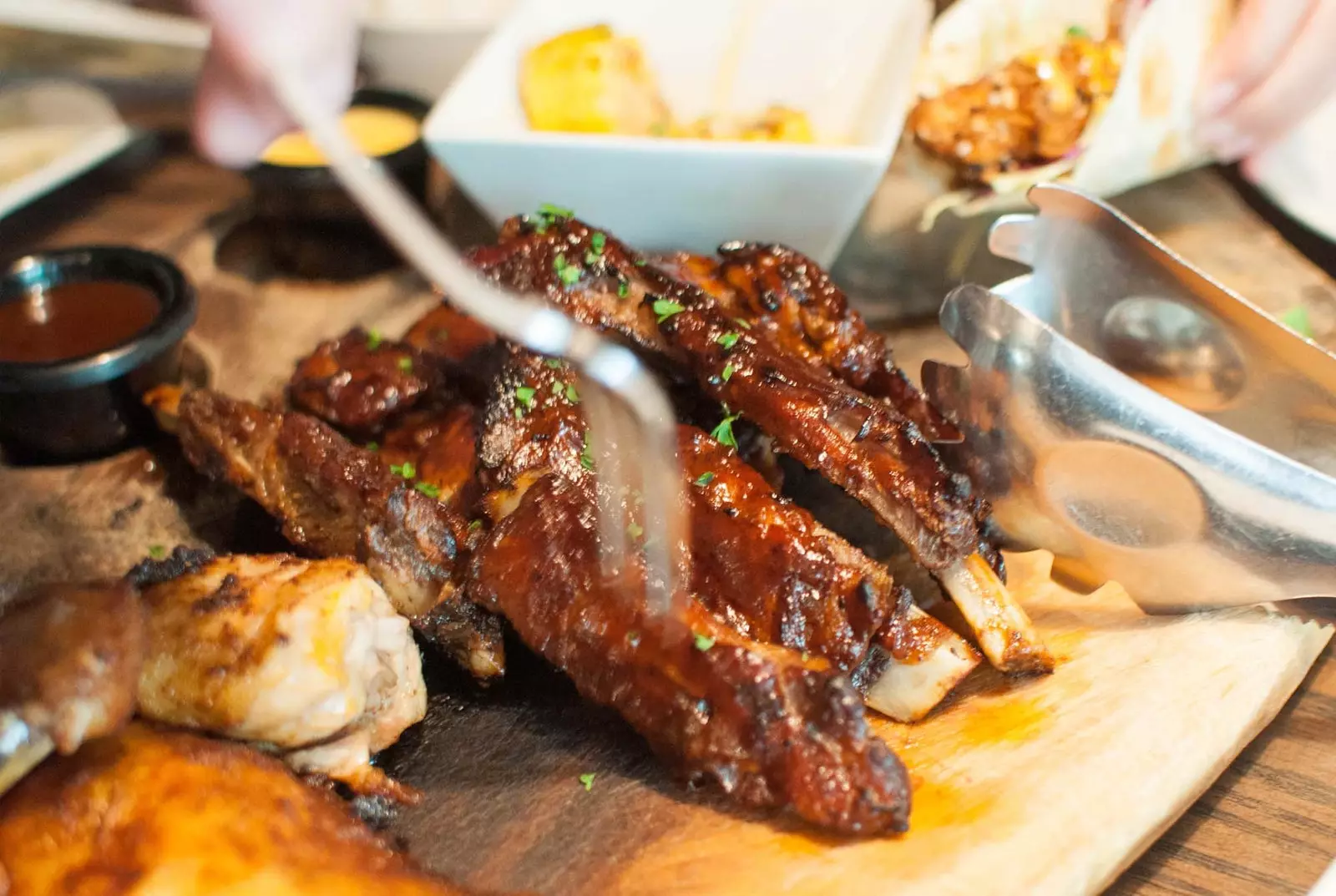
A kitchen full of nuances
Lechon is one of its most outstanding dishes and is present in every Filipino celebration. The whole pig is roasted over hot coals for hours. The result is tender, flavorful meat with crispy, golden skin. Nor is there missing chicken pork marinade , of marked Spanish roots; It is an omnipresent dish in all homes. Chicken and pork meat pieces are cooked with garlic, soy sauce, vinegar, black pepper and sugar to taste.
They say that no trip to the Philippines is complete without trying the balot . East 17 day duck embryo it is boiled and served with salt or vinegar. Yes, it can be more unpleasant than you imagine. Notice to readers: its taste, texture, smell and appearance They are not suitable for all stomachs. On the opposite side of this oddity is the rice , their most basic food. It is eaten every day, at any time and everywhere. It is easy to realize the importance that this cereal has in your diet when you see the size of the bags and the space they occupy on supermarket shelves.
But there is much more: kare-kare, pancit, crispy leg, lumpia, kinilaw, sisig, bulao, poor bangus, beef tapa, longanisa, stew, afritada, sinigang, etc. In some of these names it is easy recognize the imprint left by the Spanish during the more than three centuries that they remained on the islands.
The best known dessert is halo halo : a curious combination of crushed ice, evaporated milk, flan, fruit, jelly, beans and ube ice cream (purple sweet potato) in the same container. It's undeniable that the fun here stems from the nonsense on your face the first time you try it. But there are other sweets, specifically two, whose names can arouse the occasional irony. I am referring to the puto, a steamed rice cake, or the mamon toast, a kind of sponge cake.
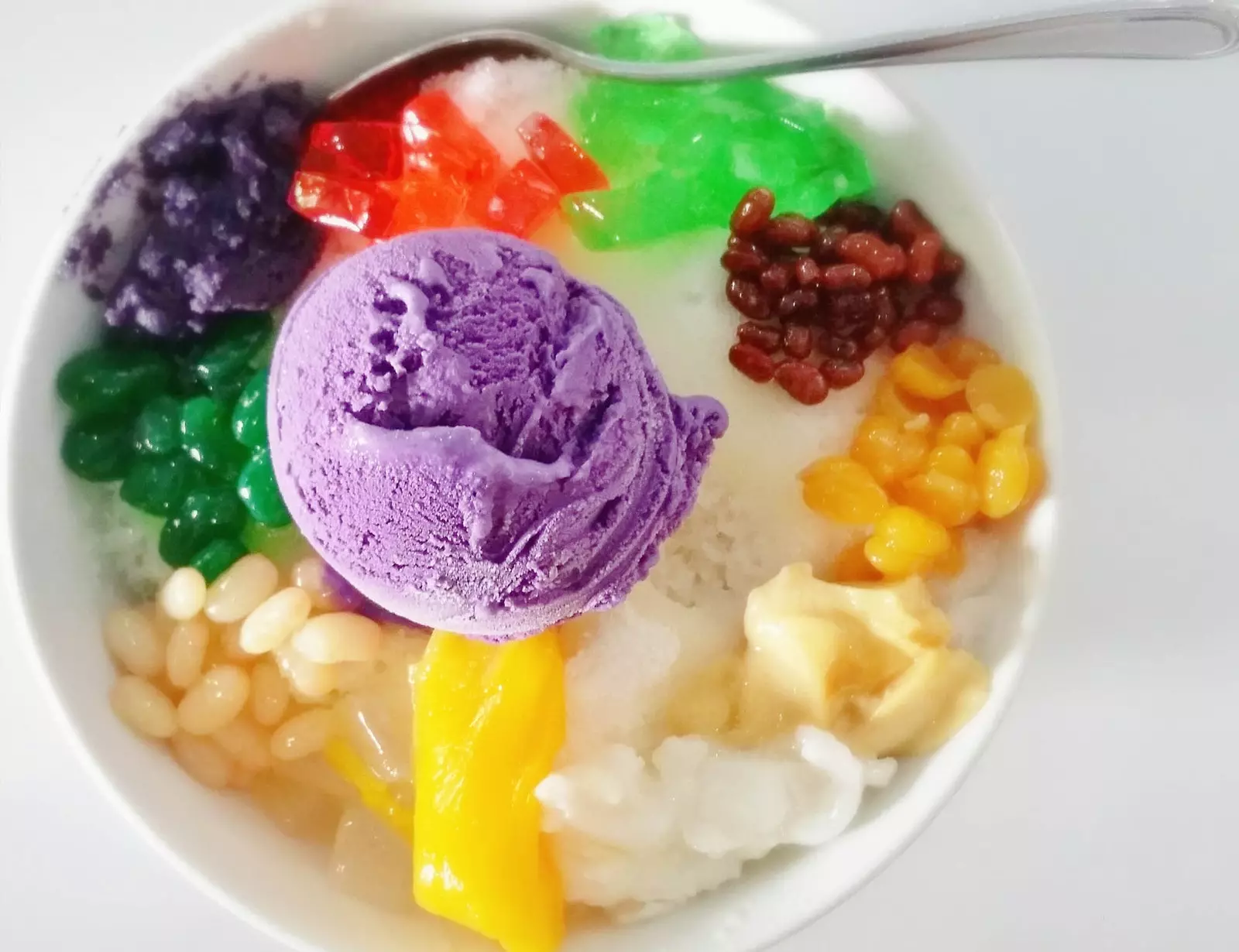
Halo-Halo, a unique dessert
its delicious tropical fruits They deserve a special mention. The flavor and aroma of mango, pineapple or papaya They are from another dimension. The intense and juicy note are inexplicable and they have no comparison to others that you have tried. In the Philippines you will also be able to discover fruits with exotic names that you have probably never heard of, such as the mangosteen, the rambutan or the peculiar and smelly durian .
Sago at gulaman It is one of their best known drinks. This combination of tapioca pearls, gelatin, brown sugar and ice is sold on every corner as a remedy to combat high temperatures. Coffee lovers will find in the Philippines the variety Coffea liberica that grows in the provinces of Batangas and Cavite . his own name, kapeng barako, describes its taste. Kapeng is coffee in Tagalog, the language of the country, and barako means brave man. Therefore, you can imagine the strong intensity of this variety. It was the Spaniards who took it and planted it in the city of Lipa, in Batangas. Its climate, soil and altitude make it an ideal place for its cultivation.
Don't be surprised if you travel to the country and see the locals eat with your hands Kamayan is a Filipino tradition that they are very proud of and a way to enjoy food without using cutlery. But it is better not to trust, since he has his technique and requires some skill to dominate her. The kindness of the Filipinos is well known and they will have no problem giving you some advice on how to proceed.
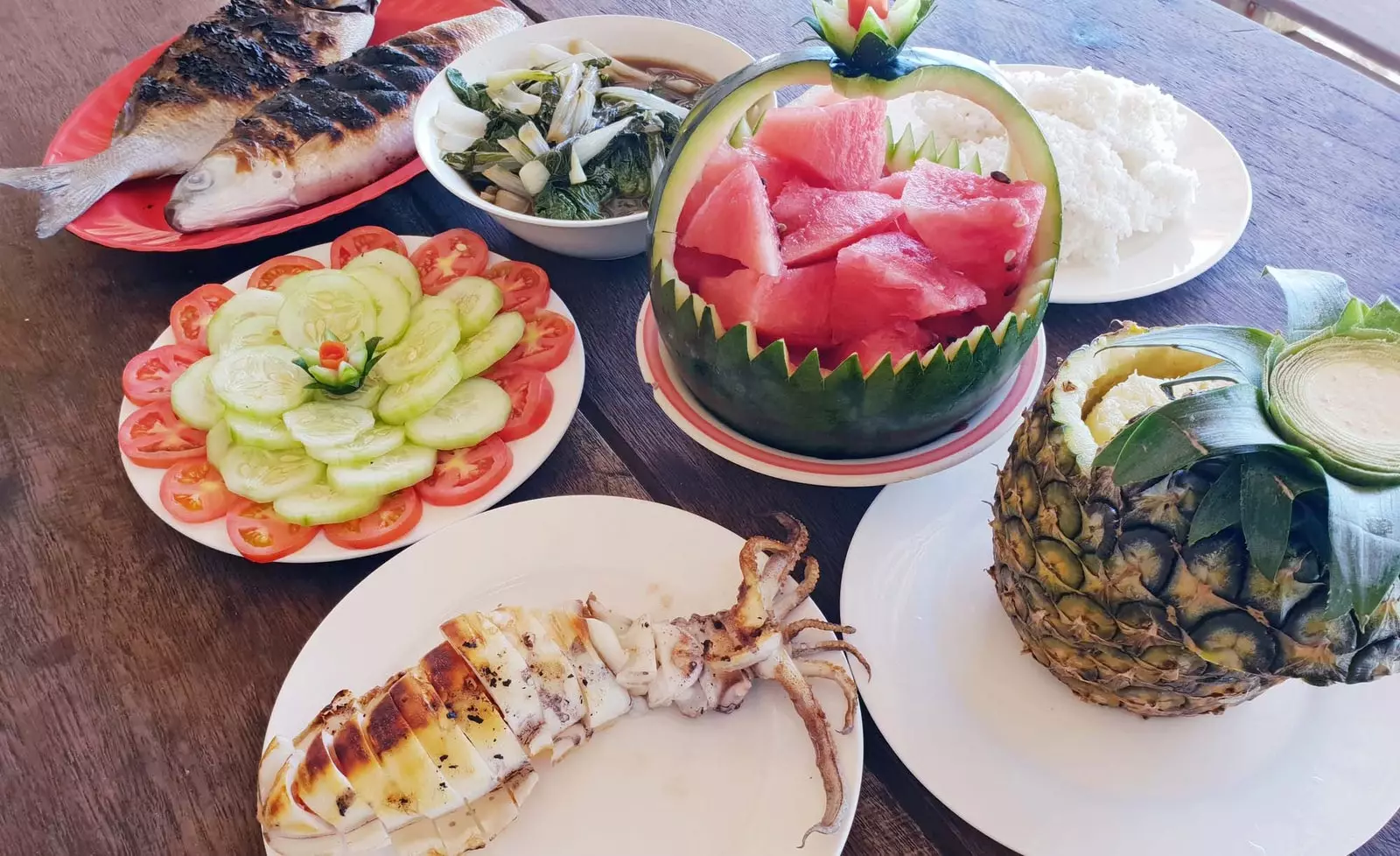
maritime banquet
Go to a Dampa It is an original way of consuming very fresh fish and shellfish compared to the Manila Bay . The first thing you find is the market where you must choose the genre you fancy and that the chefs will prepare for you at that very moment. In the back part of the market are the warm and familiar restaurants in which, once again, the food is placed in the center of the table and everyone shares it.
International cuisine is widely represented in the country, especially in Manila, its capital. It is very easy to find authentic and delicious chinese food in chinatown, on Ongpin Street, in Binondo, Korean barbecues in Malate or Maginhawa, or Japanese specialties in Little Tokyo , in Pasong Tamo. But also Spanish paella or Italian pasta.
It is not convenient to forget another of its points in favor: the price. Filipino food is suitable for all pockets. You can savor it in picturesque and refined restaurants, in luxury hotels, in fast food chains, in street stalls or in carinderias, improvised stalls where you can taste tasty homemade food for a few pesos.
In short, food for all palates and a moment of fullness guaranteed. And it is that its best-known tourist motto, It's more fun in the Philippines , is a reality. It's more fun in the Philippines because the variety and authenticity of its culinary options turn every bite into a gastronomic journey. Masarap!
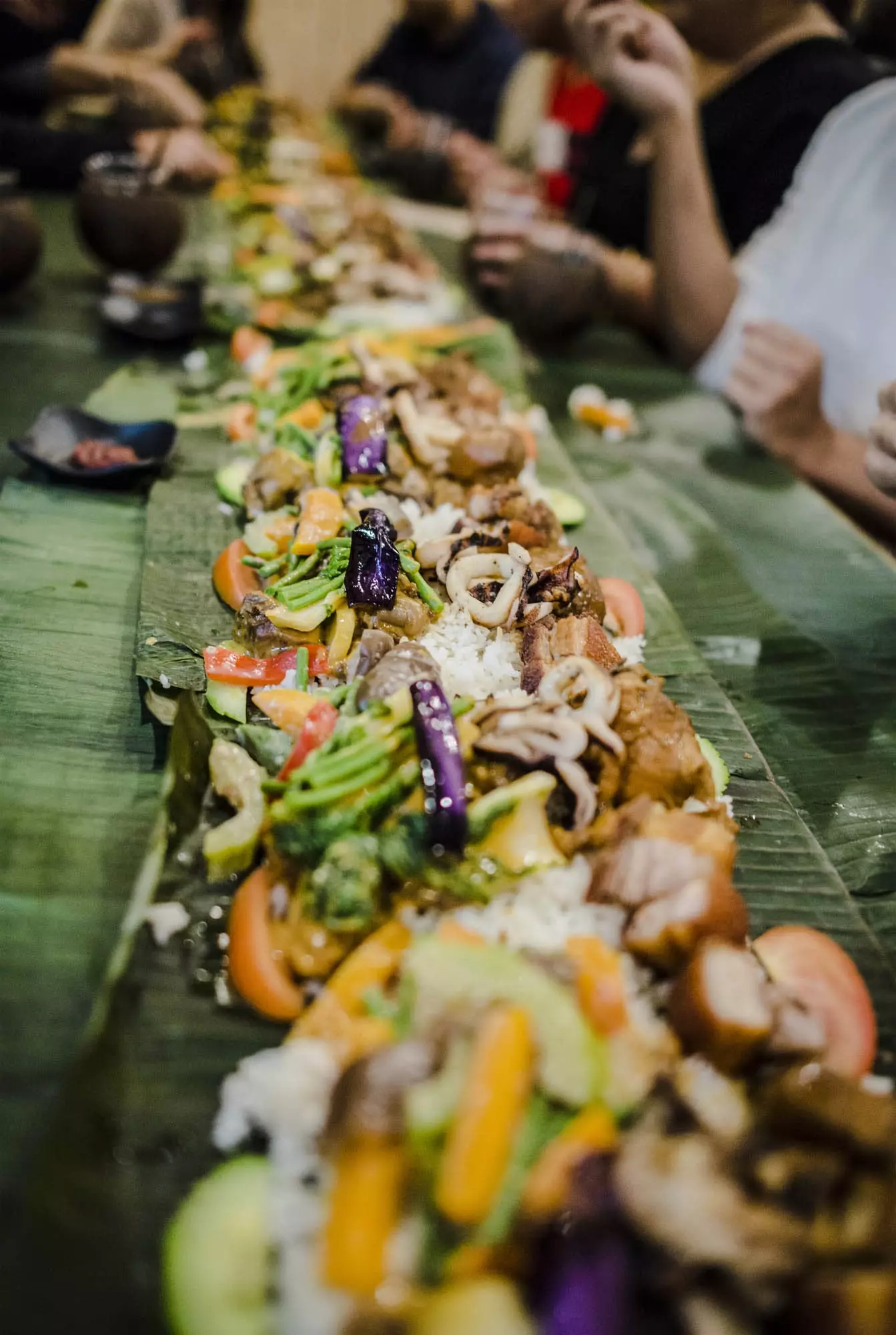
Eating with your hands is not as easy as it seems in the Philippines
